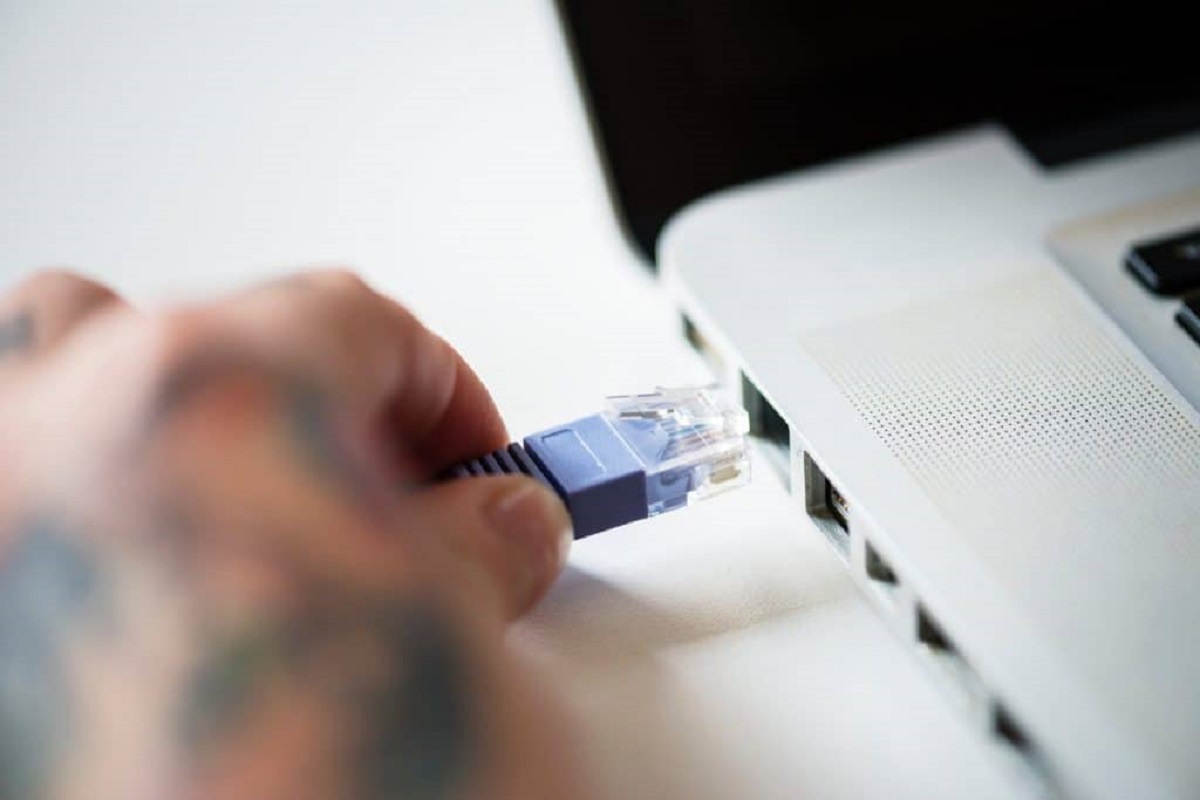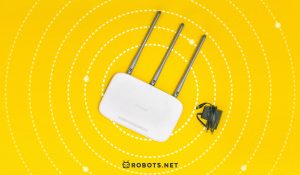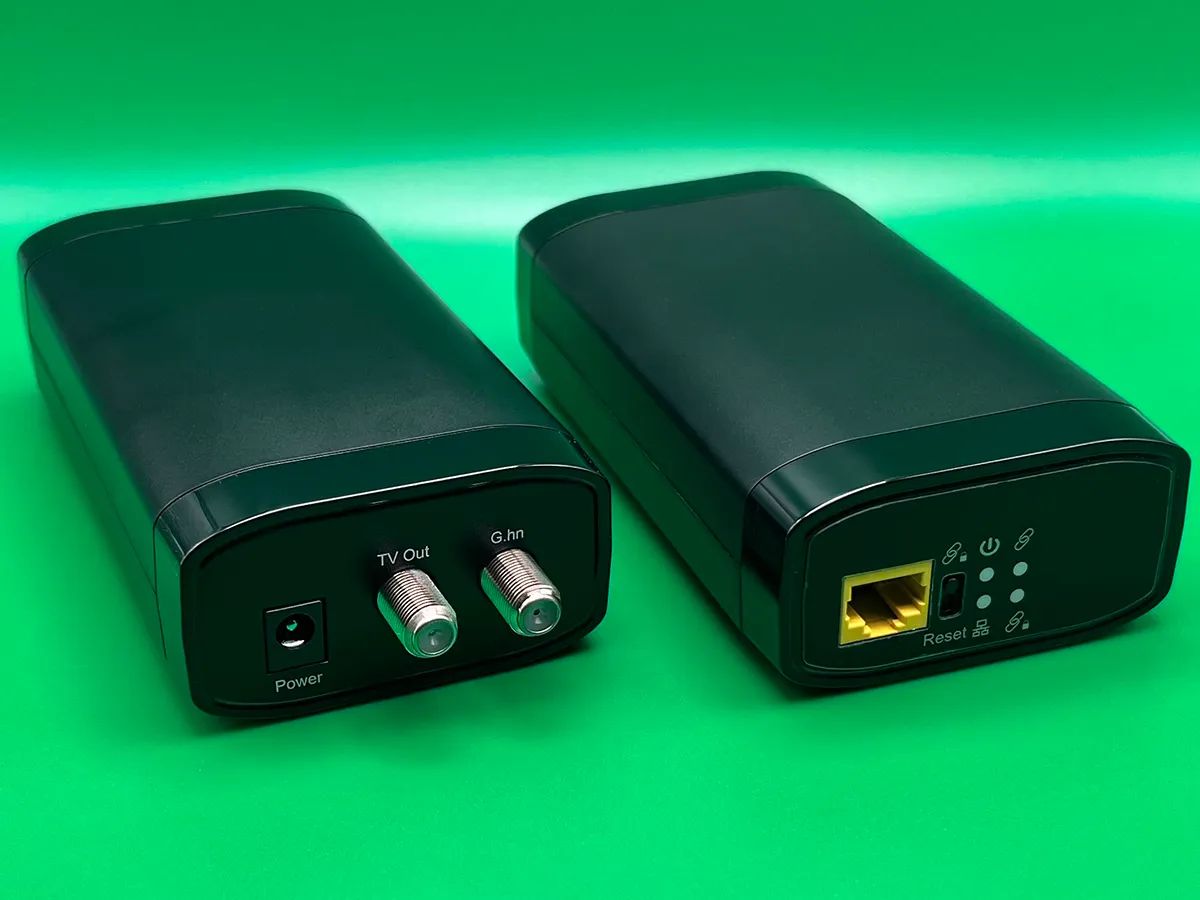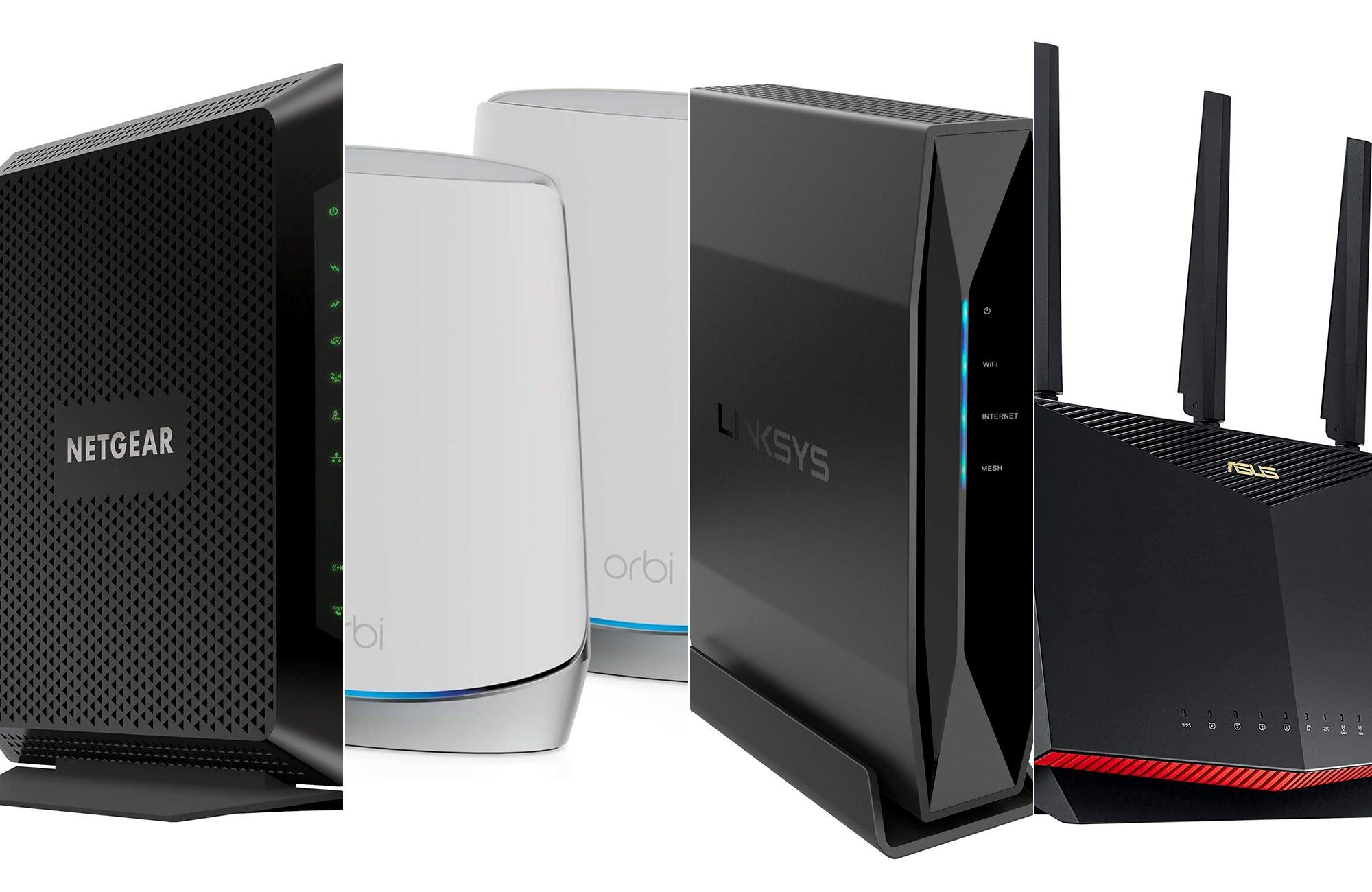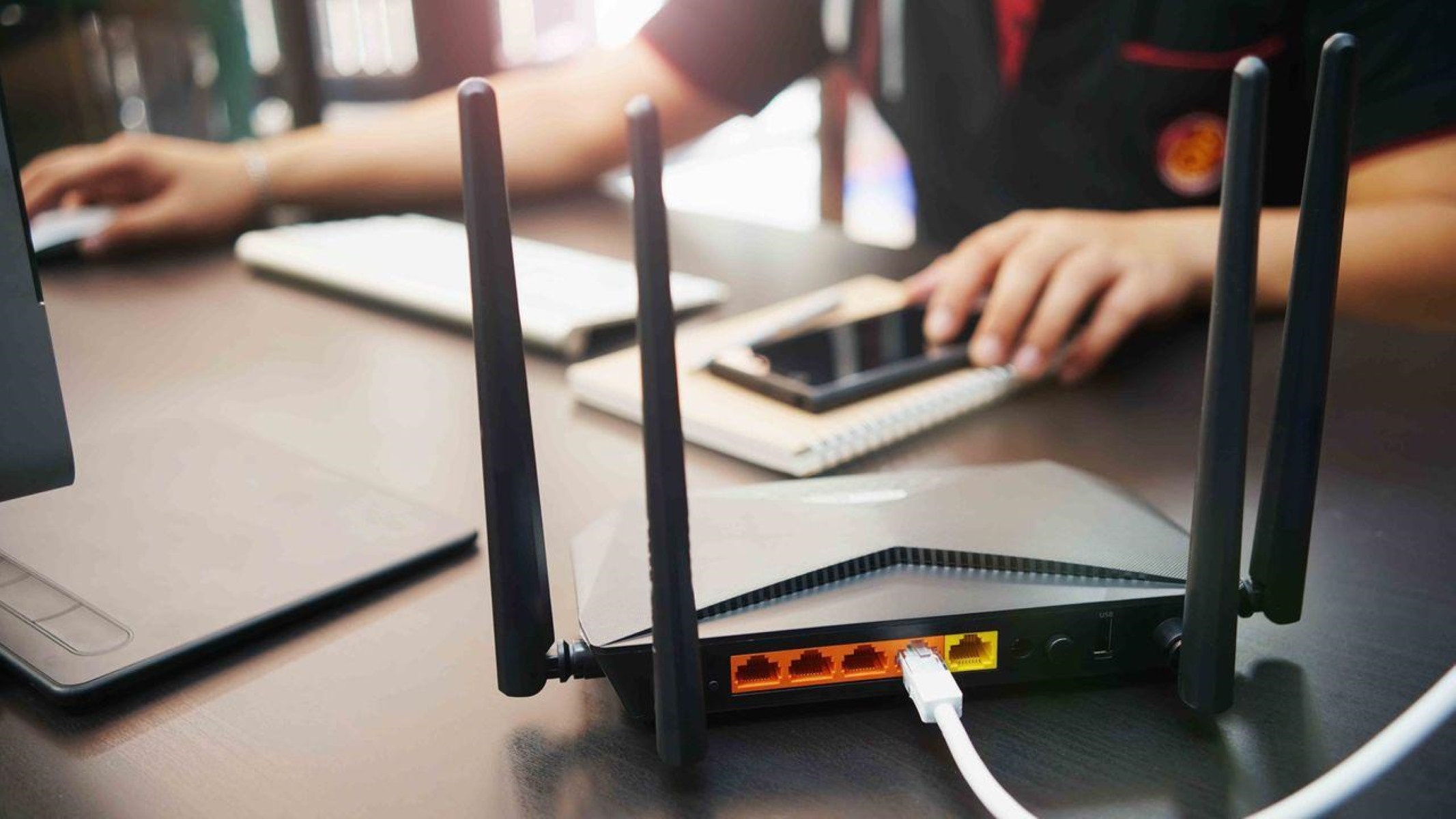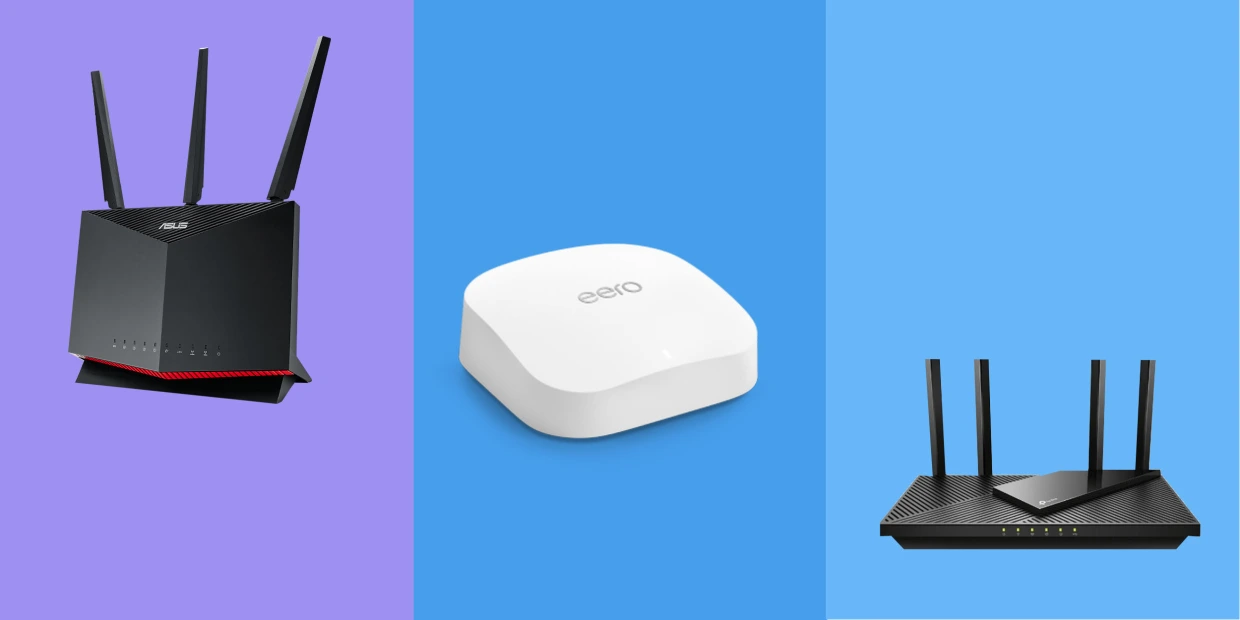Introduction
When it comes to internet connectivity, there are various options available, including Ethernet and WiFi. Both of these technologies have their own advantages and disadvantages, and users often wonder why Ethernet, which is traditionally known for its reliability and speed, can sometimes be slower than WiFi. In this article, we will delve into the reasons behind this phenomenon and explore the factors that can affect the speed of Ethernet and WiFi connections.
Ethernet is a wired networking technology that allows devices to connect to the internet using cables. It has been around for decades and is widely used in homes, offices, and data centers due to its stability and high-speed capabilities. On the other hand, WiFi, which stands for Wireless Fidelity, is a wireless networking technology that uses radio waves to transmit data between devices and a router.
While Ethernet is generally considered to be faster than WiFi, there are instances where users might experience slower Ethernet speeds. This can be a frustrating experience, especially when expecting a reliable and fast connection. Understanding the reasons behind this issue is crucial in order to troubleshoot and improve the performance of Ethernet connections.
In the following sections, we will explore the factors that can affect the speed of Ethernet and WiFi connections. By understanding these factors, users will be able to identify the potential bottlenecks and take the necessary steps to optimize their network performance.
Understanding Ethernet
Ethernet is a widely used networking technology that allows devices to connect to a local area network (LAN) or the internet using wired connections. It uses twisted pair cables or fiber optic cables to transmit data packets between devices, such as computers, routers, and switches.
One of the key advantages of Ethernet is its reliability and stability. Unlike WiFi, which can be affected by external interference, Ethernet connections are not prone to signal interference. This makes Ethernet a preferred choice for applications that require consistent and fast data transfer, such as online gaming, video streaming, and large file transfers.
Ethernet supports various speeds, including 10 Mbps, 100 Mbps, 1 Gbps (Gigabit Ethernet), and higher. The speed of an Ethernet connection is determined by the hardware, specifically the network interface cards (NICs) installed in the devices and the quality of the Ethernet cables.
When it comes to Ethernet cables, there are different categories, such as Cat5, Cat6, and Cat7. Each category has specific characteristics, including bandwidth capacity, maximum transmission distance, and noise resistance. It is important to use the appropriate Ethernet cables that meet the requirements of your network to ensure optimal performance.
Another aspect to consider is the Ethernet switch or router. These devices play a crucial role in managing the flow of data packets within a network. They can also provide additional features such as Quality of Service (QoS), which prioritizes certain types of network traffic for better performance. Having a reliable and properly configured router or switch is essential for maintaining a fast Ethernet connection.
Overall, Ethernet offers a reliable and high-speed connection option for both home and business users. Understanding the capabilities and limitations of Ethernet technology is key to troubleshooting and optimizing network performance.
Understanding WiFi
WiFi, short for Wireless Fidelity, is a popular wireless networking technology that allows devices to connect to the internet or a local area network (LAN) without the need for physical cables. It utilizes radio waves to transmit data between devices and a wireless router.
One of the main advantages of WiFi is its convenience and flexibility. With WiFi, users can connect multiple devices, such as smartphones, laptops, tablets, and smart home devices, to the network without the need for additional cables. This allows for greater mobility and flexibility in accessing the internet or network resources throughout a home or office.
WiFi networks operate on different frequencies, commonly 2.4 GHz and 5 GHz. The 2.4 GHz frequency band offers wider coverage but lower speed, while the 5 GHz band provides faster speeds but with a shorter range. Most modern routers support both frequency bands, allowing users to choose the most suitable option based on their needs.
WiFi connections can be affected by various factors that can impact signal strength and data transfer speeds. The distance between the device and the router, physical obstacles such as walls or furniture, and interference from other electronic devices can all affect the performance of a WiFi connection.
WiFi also has security considerations. It is important to secure the WiFi network with a strong password and encryption to prevent unauthorized access. Additionally, some router models offer features like guest networks, which allow visitors to connect to the internet without accessing the primary network.
WiFi technology has evolved over time, with newer standards such as 802.11n, 802.11ac, and the latest 802.11ax (also known as WiFi 6) providing increased data speeds and improved stability. Upgrading to a modern router and ensuring devices are compatible with the latest WiFi standards can lead to better performance.
Overall, WiFi provides a convenient and flexible option for wireless connectivity. Understanding the factors that can affect WiFi performance, as well as implementing proper security measures, can help optimize the speed and reliability of WiFi connections.
Factors Affecting Ethernet Speed
While Ethernet is generally known for its fast and reliable wired connections, there are several factors that can impact its speed. It is important to understand these factors in order to identify and troubleshoot any potential issues that may be affecting the Ethernet speed.
1. Cable Quality: The quality of the Ethernet cables plays a significant role in the speed and performance of the connection. Using high-quality cables, such as Cat6 or Cat7 cables, can ensure better signal transmission and minimize interference, resulting in faster Ethernet speeds.
2. Network Congestion: If there are multiple devices connected to the same Ethernet network and they are all transferring data simultaneously, network congestion can occur. This can lead to decreased speeds for each device. Utilizing techniques like Quality of Service (QoS) or implementing a faster Ethernet switch or router can help alleviate network congestion and improve speeds.
3. Router Configuration: The configuration of the router can affect Ethernet speeds. Settings such as bandwidth control, traffic prioritization, and congestion control can impact the distribution of available bandwidth among connected devices. Optimizing router settings based on network requirements can help improve Ethernet speeds.
4. Distance from the Router: The distance between the device and the router can also impact Ethernet speeds. In larger or multi-story buildings, where the Ethernet cable is required to cover longer distances, signal degradation can occur. Using signal boosters or considering alternative solutions, such as a WiFi extender or powerline adapters, can help overcome this limitation.
5. Outdated Hardware: If the network interface cards (NICs) installed in the devices are outdated or not capable of handling higher speeds, it can result in slower Ethernet speeds. Upgrading the NICs to the latest standards, such as Gigabit Ethernet, can significantly improve the speed and performance of the connection.
It is important to note that Ethernet connections are generally more stable and less prone to external interference compared to WiFi. However, the above factors can still affect the speed of an Ethernet connection. By carefully considering and addressing these factors, users can optimize their Ethernet speeds and enjoy fast and reliable wired networking.
Factors Affecting WiFi Speed
WiFi speed can be influenced by a variety of factors, and understanding these factors is crucial for optimizing the performance of a wireless network. The following are some of the key factors that can impact WiFi speed.
1. Signal Strength: The signal strength of the WiFi network is one of the most significant factors affecting its speed. The further away a device is from the router, the weaker the signal becomes, leading to decreased speeds. Obstacles such as walls, furniture, and electronic devices can also interfere with the signal and negatively impact the WiFi speed.
2. WiFi Channel Interference: WiFi routers can operate on different channels within the 2.4 GHz and 5 GHz frequency bands. If multiple nearby routers are using the same channel, it can cause interference and result in slower WiFi speeds. Switching to a less congested WiFi channel can help alleviate this issue and improve WiFi performance.
3. Network Congestion: Similar to Ethernet connections, WiFi networks can experience congestion if there are multiple devices connected and transferring data simultaneously. This can lead to slower speeds for all devices. Implementing Quality of Service (QoS) settings on the router or limiting the number of devices connected to the network can help manage congestion and enhance WiFi speed.
4. WiFi Standards: The WiFi standard that the router and device support can also impact WiFi speed. Older devices that adhere to older standards, such as 802.11g or 802.11n, may not be capable of achieving the same speeds as devices that support newer standards, such as 802.11ac or 802.11ax (WiFi 6). Upgrading to a router and devices that support the latest WiFi standards can result in faster speeds.
5. Interference from Other Devices: Many household devices, such as microwaves, cordless phones, baby monitors, and Bluetooth devices, operate on similar frequencies as WiFi. This can cause interference and result in decreased WiFi speeds. Keeping WiFi routers away from such devices and selecting a different channel or utilizing the 5 GHz frequency band can help minimize interference and improve WiFi performance.
6. Router Placement: The physical placement of the router within a building can impact WiFi speeds. Placing the router in a central location and away from physical obstructions can help distribute the WiFi signal evenly throughout the area and improve overall coverage and speed.
By taking these factors into consideration and implementing the necessary optimizations, users can enhance their WiFi speeds and enjoy a faster and more reliable wireless network connection.
Why Ethernet Might Be Slower Than WiFi
Although Ethernet is generally considered to be faster and more reliable than WiFi, there are instances where Ethernet connections can be slower than their wireless counterparts. Here are some possible reasons why Ethernet might be slower than WiFi:
1. Network Congestion: Ethernet networks can experience congestion if there are too many devices connected and transferring data simultaneously. This can cause slower speeds for all devices on the network, including those connected via Ethernet. Managing network traffic and implementing QoS settings can help alleviate congestion and enhance Ethernet speeds.
2. Cable Quality: The quality of Ethernet cables can significantly impact the speed and performance of the connection. If low-quality or damaged cables are used, it can result in slower speeds and increased data loss. Upgrading to higher-quality cables, such as Cat6 or Cat7, can help improve Ethernet speeds.
3. Router Configuration: The configuration of the router can affect Ethernet speeds. Improper settings or limitations placed on Ethernet connections, such as bandwidth restrictions or traffic prioritization settings, can result in slower speeds. Optimizing the router settings specifically for Ethernet connections can help maximize their performance.
4. Interference: While Ethernet connections are generally less susceptible to interference compared to WiFi, they can still be affected by external interference sources. Electrical interference from nearby devices or poorly shielded cables can disrupt the Ethernet signal and result in slower speeds. Ensuring proper cable installation and minimizing sources of interference can help boost Ethernet speeds.
5. Outdated Hardware: If the network interface cards (NICs) or Ethernet ports on the devices are outdated or not capable of handling higher speeds, it can lead to slower Ethernet speeds. Upgrading to modern NICs or devices that support higher Ethernet speeds, such as Gigabit Ethernet, can significantly improve performance.
It’s important to note that while these factors can contribute to slower Ethernet speeds in certain cases, Ethernet connections generally offer more stable and consistent performance compared to WiFi. Troubleshooting and addressing these factors can help optimize Ethernet speeds and ensure a reliable wired network connection.
Network Congestion
Network congestion occurs when there is a high volume of data traffic on a network, leading to decreased performance and slower speeds for connected devices. This phenomenon can affect both Ethernet and WiFi connections, and understanding how to manage network congestion is crucial for maintaining optimal network performance.
Network congestion can occur in various scenarios, such as in an office setting where multiple devices are connected to the same network or during peak usage periods when many users are actively streaming videos, downloading files, or participating in online gaming. When traffic congestion happens, the available bandwidth is divided among the connected devices, resulting in reduced speeds for individual connections.
To alleviate network congestion and improve speeds, several techniques and strategies can be employed:
1. Quality of Service (QoS): QoS is a feature available on many routers that allows you to prioritize certain types of network traffic. By assigning higher priority to critical applications such as VoIP calls or video streaming, you can ensure that these applications receive sufficient bandwidth even during periods of network congestion.
2. Bandwidth Limitation: In situations where network congestion is primarily caused by a few devices consuming a significant portion of the available bandwidth, implementing bandwidth limitations or throttling can be effective. By restricting the amount of bandwidth that specific devices or applications can utilize, you can ensure a fair distribution of resources among all connected devices.
3. Load Balancing: Load balancing involves distributing network traffic evenly across multiple network resources, such as routers or servers. This technique helps prevent individual devices or resources from becoming overloaded, reducing the risk of congestion. Load balancing can be achieved through various methods, such as utilizing multiple Internet Service Providers (ISPs) or implementing specialized load balancing hardware or software.
4. Hardware Upgrades: In some cases, network congestion may be a result of having outdated or underpowered routers or switches. Upgrading to higher-capacity networking equipment can provide additional bandwidth and better handle increased traffic, ultimately reducing congestion and improving network speeds.
Network congestion can be a frustrating issue, as it can significantly impact productivity and user experience. By implementing appropriate measures such as QoS settings, bandwidth limitations, load balancing, and upgrading hardware, network congestion can be effectively managed, leading to improved speeds and smoother network performance.
Cable Quality
The quality of cables used in a network infrastructure plays a vital role in the speed, reliability, and overall performance of Ethernet and other wired connections. Using high-quality cables is essential to ensure optimal data transmission and to minimize potential issues that can hinder network performance.
Cable quality refers to the construction, materials, and design of the cables, which can greatly influence their performance. Here are some key considerations when it comes to cable quality:
1. Cable Category: Ethernet cables are categorized based on their performance capabilities. Common categories include Cat5, Cat6, Cat6a, and Cat7, with higher number categories generally offering higher speeds and better shielding against interference. Upgrading to a higher category cable can improve data transmission speed and reduce the likelihood of signal degradation.
2. Build Quality: The physical build quality of the cables can vary among different manufacturers. It’s important to choose cables that have been manufactured to meet industry standards and undergo thorough testing to ensure consistent performance. Look for reputable brands and cables that comply with industry specifications.
3. Shielding: Shields or foil wraps are sometimes incorporated into Ethernet cables to protect against electromagnetic interference (EMI) and radio frequency interference (RFI). Shielded cables, such as those with an additional outer foil layer or metal braiding, can provide better performance in environments with high levels of electronic noise, such as in industrial settings or areas with many electronic devices.
4. Connector Quality: The connectors on the ends of the cables, commonly RJ-45 connectors for Ethernet, should be well-constructed and properly terminated. Loose or poorly terminated connectors can lead to signal loss and decrease the overall quality of the connection. Check for connectors that are securely crimped and provide a snug fit when inserted into the network devices.
Using low-quality or damaged cables can result in a range of issues, including reduced speeds, dropped connections, and increased data errors. These issues can be especially problematic for higher-speed Ethernet standards, such as Gigabit Ethernet and beyond, as they require better signal integrity.
By investing in high-quality Ethernet cables, users can ensure a stable and fast network connection. Quality cables offer better resistance against interference, provide faster data transmission rates, and are more likely to maintain a reliable connection over longer distances.
It’s important to note that cable quality alone might not solve all network issues. Proper installation, cable management, and avoiding physical damage to the cables are also crucial for maintaining optimal network performance.
Router Configuration
The configuration of your router plays a significant role in the performance and speed of your network connection. By optimizing the settings and making appropriate adjustments, you can enhance the overall network performance and ensure a faster and more reliable connection.
Here are some key aspects of router configuration that can impact network speed:
1. Update Firmware: Router manufacturers often release firmware updates to improve performance, fix bugs, and add new features. Keeping your router’s firmware up to date ensures that you have the latest optimizations and enhancements, which can improve speed and stability.
2. Bandwidth Control: Many modern routers offer bandwidth control or bandwidth allocation features. These settings allow you to prioritize certain devices or applications over others, controlling how much bandwidth each device or application can utilize. By allocating more bandwidth to critical tasks or devices, you can ensure faster speeds for those specific activities.
3. Traffic Prioritization: Similar to bandwidth control, traffic prioritization allows you to prioritize specific types of network traffic, such as VoIP (Voice over IP) calls or video streaming. This can be done by configuring Quality of Service (QoS) settings on the router. Prioritizing important traffic over less critical traffic ensures consistent speed and performance for essential applications.
4. Wireless Channel Selection: If you are experiencing interference or slow WiFi speeds, changing the wireless channel on your router can help. Many routers have an automatic channel selection feature that detects the least crowded channel in your area. Manually selecting a less congested channel can improve WiFi performance and reduce interference from nearby networks.
5. Congestion Control: Some routers offer congestion control mechanisms that actively monitor the network and adjust settings to handle high traffic periods. These mechanisms can help reduce congestion and maintain higher speeds during peak usage times.
6. Guest Network: If you frequently have visitors accessing your WiFi network, enabling a separate guest network can help maintain better overall network performance. Guest networks keep your main network separate from guest devices, ensuring that bandwidth is primarily dedicated to your own devices rather than being shared with guests.
It’s important to note that router configuration options may vary depending on the model and manufacturer. Consult your router’s user manual or online documentation to access and modify the settings specific to your router.
By properly configuring your router, keeping the firmware up to date, and utilizing built-in features such as bandwidth control, traffic prioritization, and congestion control, you can optimize your network connection for faster speeds and improved performance.
Interference
Interference can significantly impact the performance and speed of both Ethernet and WiFi connections. It refers to the disruption or distortion of signals caused by external factors, resulting in degraded network performance. Understanding the various sources of interference and implementing appropriate mitigation strategies can help improve the speed and reliability of your network connection.
1. Electromagnetic Interference (EMI): EMI is caused by electromagnetic radiation emitted from various electronic devices, such as fluorescent lights, microwave ovens, or power cables. These electromagnetic waves can disrupt the signal transmission of both Ethernet and WiFi connections, leading to reduced speeds and increased data errors. Minimizing the proximity of these devices to your network equipment can help reduce EMI interference.
2. Radio Frequency Interference (RFI): RFI occurs when wireless devices, such as cordless phones, baby monitors, or Bluetooth devices, operate on or near similar frequencies as WiFi or other wireless signals. This interference can result in decreased WiFi speeds and signal strength. Relocating or repositioning the interfering devices away from your router or using cordless devices on different frequencies can help minimize RFI.
3. Physical Obstacles: Physical obstructions, such as walls, floors, furniture, or even large appliances, can impede the signal transmission of both Ethernet and WiFi. These obstacles can cause signal degradation and weakened network performance. Optimizing the placement of your network equipment and avoiding dense barriers between devices can help mitigate this type of interference.
4. Adjacent Channel Interference: WiFi networks operate on different channels within the 2.4 GHz and 5 GHz frequency bands. If multiple nearby WiFi networks are using the same or overlapping channels, it can cause interference and lower the overall WiFi speed. Switching to a less congested channel or utilizing the 5 GHz frequency band can minimize adjacent channel interference.
5. Poor Cable Management: Improperly organized or tangled cables near networking equipment can cause interference and decrease the signal quality of Ethernet connections. Ensure that Ethernet cables are neatly organized, as well as kept at a distance from power cables and other potential sources of interference.
Reducing interference is essential for optimizing network performance. Simple measures such as rearranging devices, minimizing the use of interfering devices, improving cable management, and selecting the appropriate channels for WiFi networks can go a long way in minimizing interference and improving the speed and reliability of your network connection.
Outdated Hardware
Using outdated hardware can contribute to slower speeds and decreased performance in both Ethernet and WiFi connections. As technology advances, older hardware may not be able to keep up with the demands of modern networks, leading to limitations in speed and capability. Understanding the impact of outdated hardware and upgrading when necessary is crucial for maintaining optimal network performance.
1. Network Interface Cards (NICs): The network interface card, or NIC, is responsible for facilitating communication between a device and the network. Outdated NICs may only support lower network speeds, such as 100 Mbps, while modern networks require higher speeds, such as Gigabit Ethernet (1 Gbps) or beyond. Upgrading NICs to the latest standards can significantly improve network speeds and performance.
2. Wireless Adapters: WiFi adapters built into devices, such as laptops or desktop computers, are also subject to becoming outdated. Older WiFi adapters may only support outdated WiFi standards, such as 802.11b or 802.11g, which offer slower speeds compared to newer standards like 802.11n or 802.11ac. Upgrading to devices with newer WiFi adapters can take advantage of faster network speeds and improved signal stability.
3. Router or Switch: Outdated routers or switches may lack the processing power and features necessary to handle increased network speeds and multiple simultaneous connections. Upgrading to a modern router or switch with support for higher network speeds and advanced features, such as QoS or Gigabit Ethernet ports, can greatly improve network performance and speed.
4. Modem: If you are experiencing slower speeds on your Ethernet or WiFi connection, an outdated modem could be the culprit. Modems provide the connection to your internet service provider (ISP) and can become obsolete as ISPs offer faster internet plans. Upgrading to a modem with support for higher speeds can allow you to fully utilize the bandwidth provided by your ISP.
5. WiFi Range Extenders: If your WiFi network has limited coverage or weak signal strength, outdated range extenders may not offer the same performance as newer models. Upgrading to a more modern WiFi range extender with improved antenna technology can help extend and strengthen the WiFi signal, resulting in faster speeds and better coverage throughout your home or office.
By identifying and replacing outdated hardware components, you can ensure that your network infrastructure is capable of supporting the speeds and capabilities required for modern networks. Regularly checking for firmware updates and consulting with professionals in the field can provide insights into the latest hardware advancements and ensure that your network is optimized for the best performance.
Conclusion
Ethernet and WiFi are both popular options for network connectivity, each with its own strengths and weaknesses. While Ethernet has a reputation for reliability and speed, there are circumstances where it might be slower than WiFi. Understanding the factors that can affect the speed of Ethernet and WiFi connections is crucial for troubleshooting and optimizing network performance.
Factors that can impact Ethernet speed include cable quality, network congestion, router configuration, interference, and outdated hardware. Using high-quality Ethernet cables, managing network congestion, properly configuring routers, minimizing interference, and upgrading outdated hardware can help enhance Ethernet speeds.
Similarly, WiFi connections can also be affected by factors such as signal strength, network congestion, hardware limitations, interference, and router configuration. Improving WiFi signal strength, managing network congestion, upgrading outdated WiFi hardware, minimizing interference, and optimizing router settings can lead to better WiFi speeds.
Both Ethernet and WiFi connections have their own advantages, and users should choose the most suitable option based on their specific needs. Ethernet offers stability, reliability, and fast speeds for wired connections, making it ideal for tasks that demand consistent and high bandwidth performance. WiFi, on the other hand, provides convenience, mobility, and flexibility for wireless connections, making it a popular choice for devices that require mobility or cannot be physically connected to a router.
By understanding the factors that can impact the speed of Ethernet and WiFi connections, as well as implementing the appropriate optimizations, users can maximize the speed and performance of their network connections. Whether it’s optimizing router settings, upgrading cables and hardware, or managing interference, taking the necessary steps to optimize network performance can significantly improve the overall experience of using Ethernet or WiFi connections.







